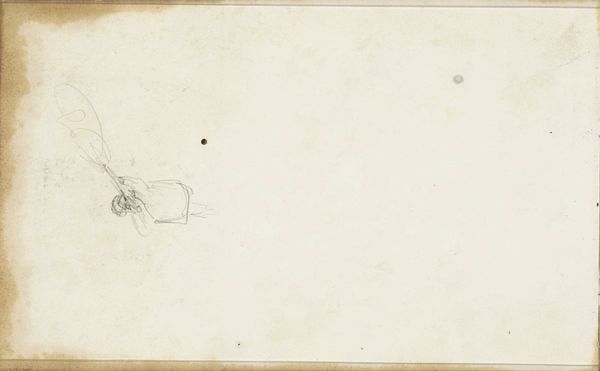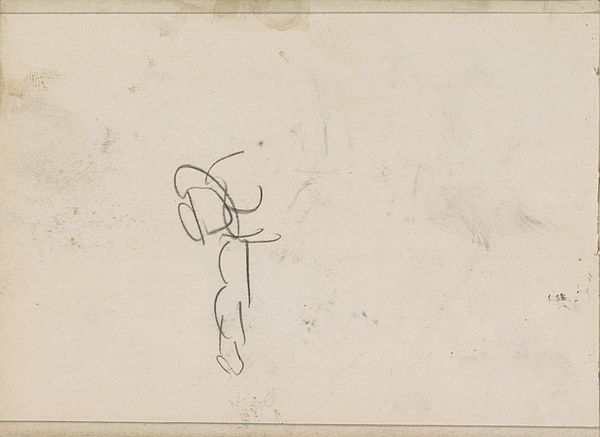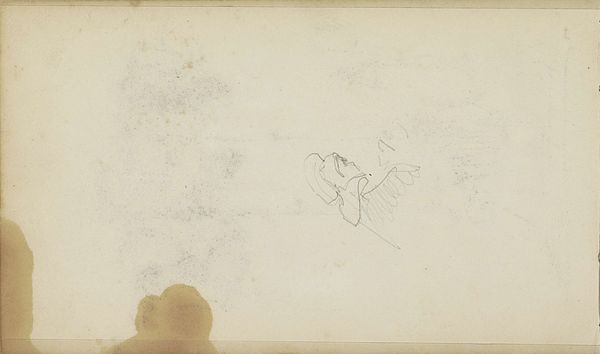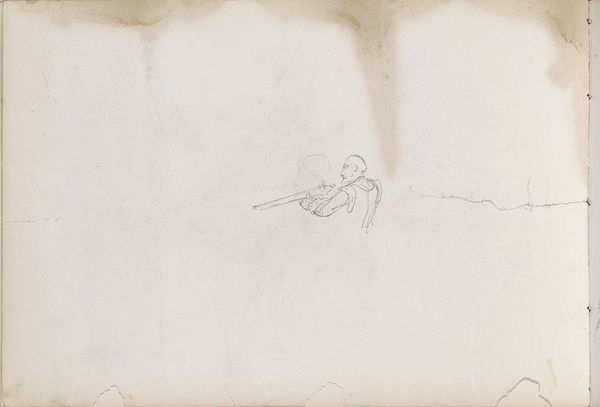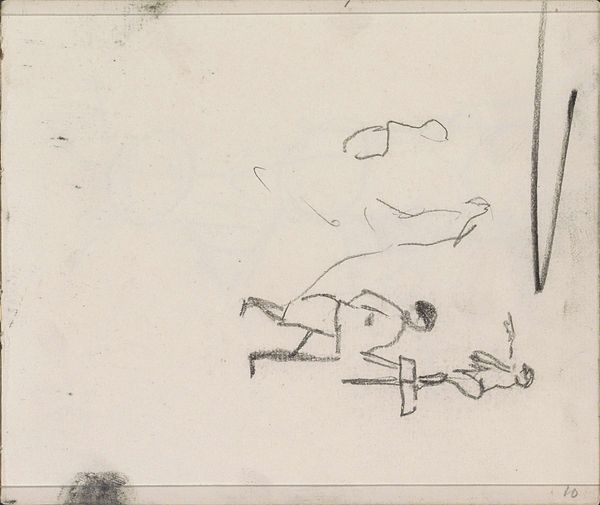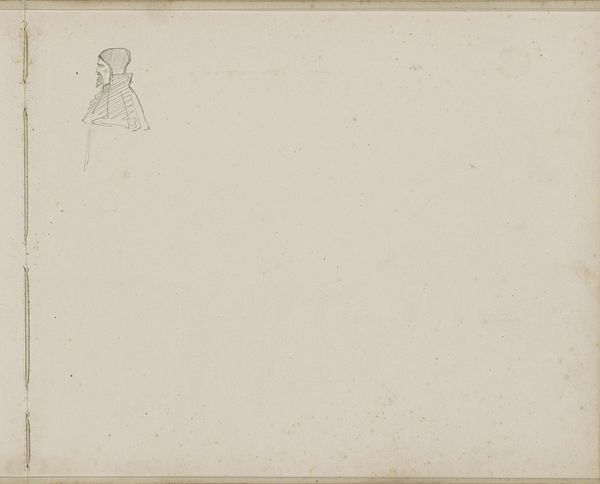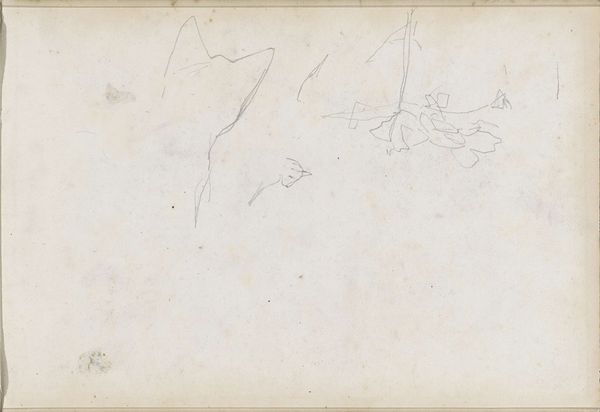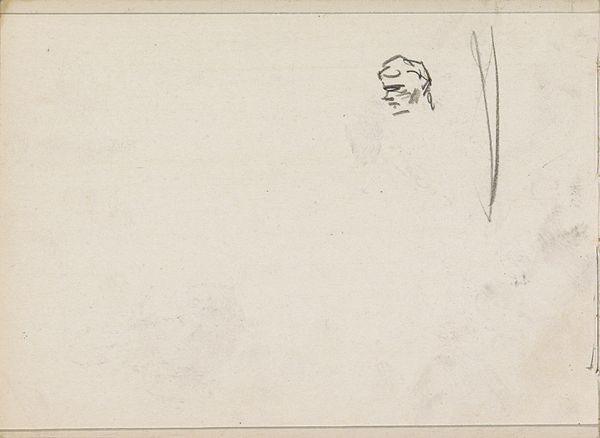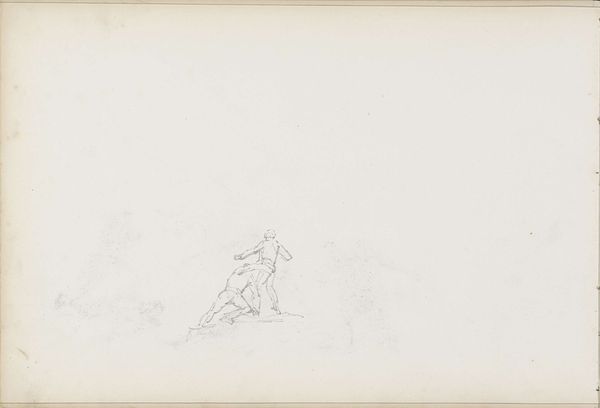
drawing, paper, pencil
#
portrait
#
pencil drawn
#
drawing
#
pencil sketch
#
figuration
#
paper
#
romanticism
#
pencil
Copyright: Rijks Museum: Open Domain
Curator: Here in Gallery 12, we have a drawing entitled "Figuur, op de rug gezien"—or "Figure, Seen from the Back"—created by Johannes Tavenraat between 1840 and 1841. Editor: It's wonderfully understated. Just a few pencil strokes, really, yet they evoke such a sense of… isolation, maybe? It's so minimal. Curator: Tavenraat was working during the Romantic period. The figure turned away suggests the viewer is invited to ponder that figure's inner world, their subjective experience, the ‘Sturm und Drang’ as they used to call it. Editor: Absolutely. The medium – paper and pencil – contributes to that intimate feeling. It’s a humble material, readily available, encouraging the democratization of artmaking, I'd argue. You don't need fancy oils or a grand studio to express something profound. Curator: True. It speaks to the accessibility of art, but also consider the symbolism. The back often represents the unknown, the future. We are being presented with a human, turned away from us. There is the idea of hidden identity. It begs many questions: what are they looking at, what is on their mind? Editor: And in a purely material sense, look at the paper itself. The aging is evident. The discoloration, those little imperfections—they tell a story of the object's own journey through time and handling. We can consider it a found item rescued from complete decay. Curator: Perhaps Tavenraat intended for these sheets to function as studies. This might very well be a sketch in preparation for another larger project. Its value now comes not just from Romanticism, but how the material carries the ghost of production itself. Editor: So much information conveyed by such limited means. A perfect case study of less being more. Curator: Indeed, this figure is an intriguing invitation to reflect on the artist, the time in which he lived, and perhaps ultimately our place in the course of human history. Editor: And a reminder that the simplest materials, transformed by a skilled hand, can spark endless contemplation.
Comments
No comments
Be the first to comment and join the conversation on the ultimate creative platform.
